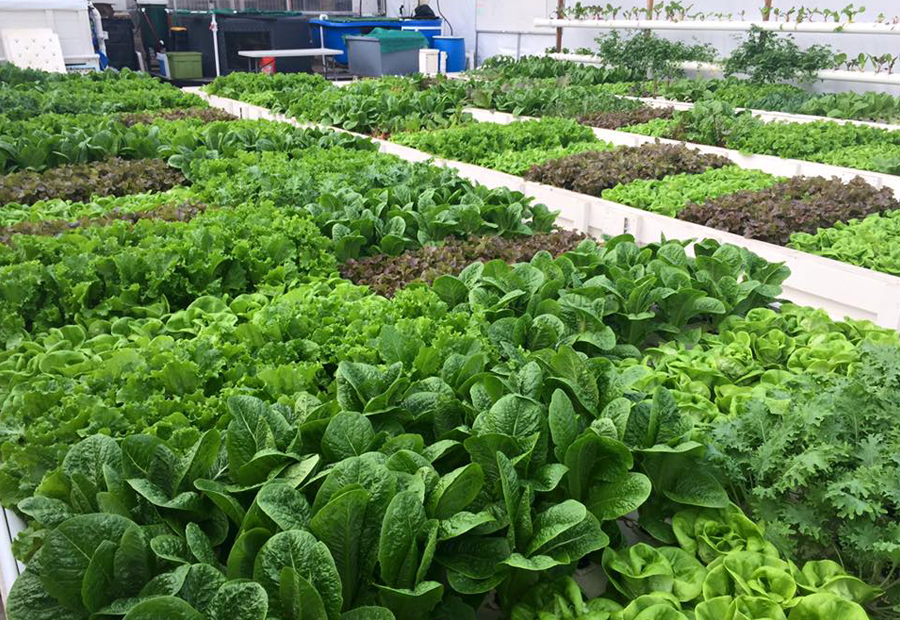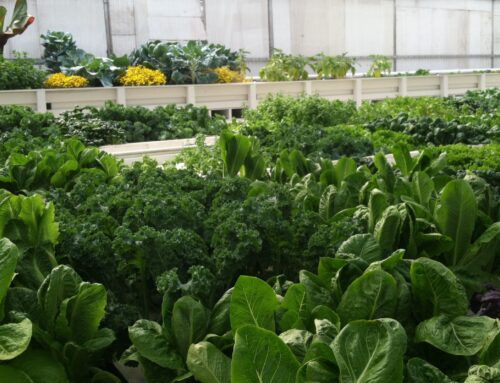“The food system is out of balance,” says JD Sawyer, founder of Colorado Aquaponics, which houses an aquaponics farm known as Flourish Farms. “We’ve got to figure out a way to have higher quality foods using less resources, period, or it’s not gonna work. It’s really gonna take a grassroots effort. Instead of fighting the model, we’re just gonna have to change it.”
Aquaponics is defined as an eco-friendly system that recirculates water from a fish tank through a vegetable grow bed. Nutrients from the fish waste feed the plants and the plants filter the water to keep the fish healthy.
Raising fish, including one-and-a-half to two-pound striped bass, is a huge part of the equation for Flourish Farms from both a financial and nutritional standpoint. “It’s a cheaper source of nutrients or fertilizer, if you will, than typical hydroponic solutions.”
Agriculture in general is the largest consumer of water worldwide, notes Sawyer. Flourish Farms uses about 11,000 gallons of water in total, which recirculates through a single pump over and over again. “In aquaponics, you can use five to ten percent of the water that you would otherwise use in traditional, soil-based agriculture, which is one-time use…and water, as you know, is a precious resource, so we’ve got to figure out ways to grow more food with less water, and that’s really one of the most attractive elements of aquaponics.”
Flourish Farm services restaurants and markets within a five-mile radius. “All of our chefs, they want to have a personal connection with the farm,” says Sawyer. “A lot of what we do is based upon their demands, the products that they really need, week in and week out.” Flourish Farms doesn’t sell at retail or wholesale prices, but somewhere in between to ensure that each partnership is mutually beneficial. The increasing transparency of menu ingredients has allowed chefs and restaurant owners to communicate with guests where these products come from, educating them about aquaponics while giving Flourish Farms some additional buzz.


